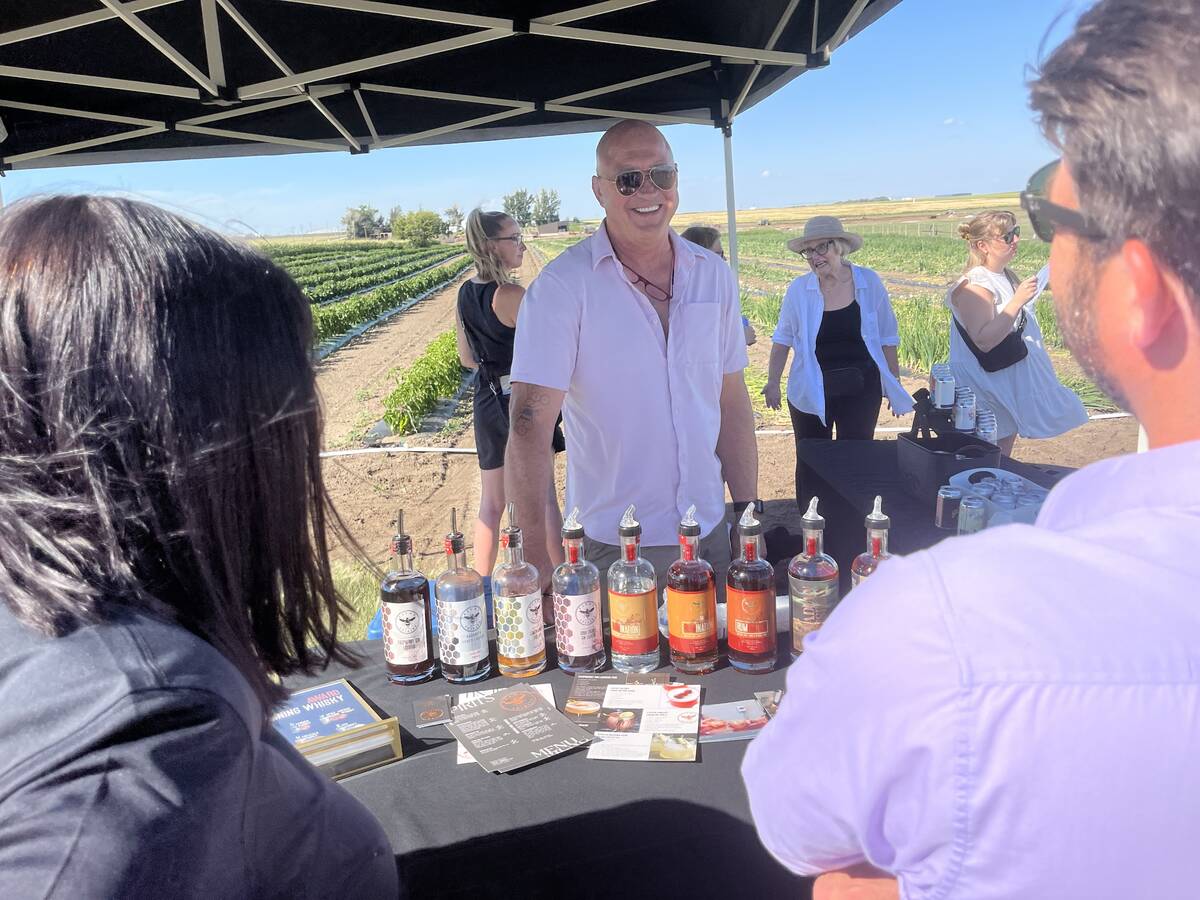Changing the industry | New legislation will require nest boxes, perches, scratching areas and more space for laying hens
RED DEER — Proposed legislation in the United States to change the way laying hens are raised was a compromise between farmers and animal rights activists, says a farm leader.
Gene Gregory, president of United Egg Producers, said the organization, which represents 95 percent of American egg production, decided to end its costly adversarial approach and reach a compromise with the Humane Society of the U.S.
“Egg producers have probably been a leader in animal welfare for 10 years, but even though we did that, it wasn’t good enough,” Gregory told the recent Alberta Farm Animal Care Association conference in Red Deer.
Read Also

From farmer to award-winning distiller
Pivot Spirits showcases transition from farmer to distiller with provincial award-winning results in Alberta for Lars Hirch
The legislation, if passed in June, will force egg producers to change the way they do business over the next 15 years and introduce nest boxes, perches, scratching areas and more space per bird.
In exchange, the humane society has agreed to stop undercover videos and pursuit of state legislation to force producers to change their practices.
The legislation will eventually require the use of enriched cages that provide 124 sq. inches per bird instead of the current standard of 67 sq. inches.
There are 285 million laying hens in the U.S. and nearly all are kept in conventional cage systems.
“This is virtually rebuilding an entire industry,” Gregory said.
He figures it will cost $4 billion to retrofit barns.
Other groups are lobbying against the legislation, including beef, pork, sheep, dairy and turkey producers. They argue it sets a precedent by legislating production practices.
The proposed legislation would supersede state laws, including those passed in Arizona, California, Michigan and Ohio.
California producers must still eliminate conventional cages by 2015, but the requirement also applies to the sale of all eggs and egg products sold in the state. Because California imports 40 percent of its eggs, the requirement will apply to out of state suppliers as well as California producers.
Gregory said fighting state ballot initiatives and arguing with animal welfare groups was costing egg producers money. Campaigning against California’s 2008 Proposition 2 to ban battery cages cost the organization more than $10 million.
Egg farmers thought the proposition would fail, but animal activists introduced disturbing videos about conditions in chicken barns across America a few days before the vote.
“One thing I learned from this, no matter how much you educate the consumer about economics, about the science, about the farmers, what is most impressionable is the day they go to the election. The thing they remember about the election is those despicable videos,” Gregory said.
The compromise legislation is an example of changing trends among consumers and corporations, said marketing consultant Charlie Arnot of the Centre for Food Integrity in Kansas City, Missouri.
People do not understand the scale and technology involved in modern agriculture, in which producers may use confinement, medications and growth promotants.
“This is not farming in the minds of many,” he said.
As well, non-government organizations are approaching major food companies to force changes on their suppliers.
“NGOS have really discovered that global brands can do what governments cannot,” he said.
Corporations are being asked to question what is happening on the farms that supply them.
“When they come to a corporation with these issues, it becomes an increasing challenge for corporations. It is like using gunpowder against the weakest link in the company’s value chain,” he said.















